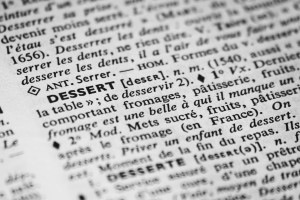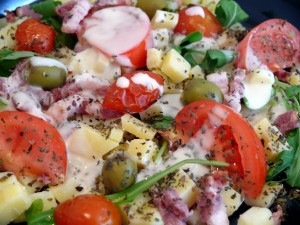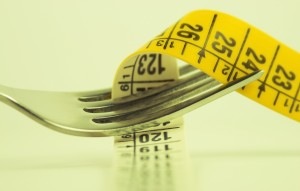What Do I Want To Eat?
What Do I Want To Eat? That’s a question we all ask ourselves. Including me. A lot. Standing in front of the fridge with the door open. Staring at the shelves in the pantry. In front of the deli case. Trying to decipher a menu. With no clear idea, the danger zone looms setting up the perfect scenario for being easily swayed by all kinds of food that, perhaps, is not really the best for you.
What Should I Eat?
Then there’s the other question — one I get asked all the time as a weight management coach: “What SHOULD I eat?”
What’s the answer?
Sorry to disappoint you, but I don’t have a specific one. I can’t tell you, or my clients, what to eat. That’s your personal decision. What I can and do say is that deprivation doesn’t work. Certainly not for long lasting and healthy weight loss and maintenance. Restriction and deprivation mean a pendulum swing – restriction on one end and indulgence on the other. How many times have you foregone a food that you love only to gorge on it when you hit an emotional low and toss resolve out the window. Constant dieting doesn’t work either. It messes with your metabolism, and because dieting, by its very nature, means deprivation. A healthy lifestyle is an essential component of long-term weight management.
What can you do to get out of the dieting cycle and manage your weight?
There’s no way around it: the formula is energy taken in (calories) should equal energy output (physical movement and metabolism). If you eat more calories than you use up, you gain weight. To maintain your weight, your energy (calorie) intake and caloric expenditure (activity and metabolism) have to be in balance. An imbalance means you either gain weight or lose weight.
Don’t throw in the towel just yet. There are ways to help figure out how to eat good and tasty food and not pack on the pounds. Each of us has food that we feel we can’t live without and food memories that are associated with tradition, culture, and nurturing. It’s hard to separate food for sustenance from any of these emotionally charged food behaviors. And why should you? Doing so certainly sounds like a set-up for discomfort and what may be taken as either lack of willpower or failure.
Some Questions To Ask Yourself
No eating strategy will work if you are not happy and physically and mentally satisfied (satisfaction can mean both feeling comfortably satiated and intellectually satisfied that you are eating well).
Armed with knowledge about what is healthy food and what is not, and what your body needs in terms of a ballpark number of calories and nutrients, here are a bunch of questions you can use to mentally evaluate your food choices – before you make them. It sounds like a big deal, but it’s really not – you probably ask yourself some of these already. It’s a workable system of “foodie checks and balances.”
Foodie Checks and Balances
There are a series of questions you can ask yourself when you’re contemplating your food choices. By doing this you gain valuable information to use to make you feel good and to control your weight.
- What is my tried and true meal that can be my fallback or my go to meal for breakfast, lunch, or dinner? What type of food did I grow up with? Did that type of eating give me energy, strength, and clarity? There’s something to be said about eating the way our ancestors did (even if its only one or two generations ago).
- How do I feel when I eat this food? If you feel like garbage after eating red meat or drinking a glass of milk, stay away from those foods. Just because someone else eats them doesn’t mean you have to. A journal comes in handy so you can jot down what you eat and how you feel and look at the associations.
- Is it delicious? Why waste your calories on something that doesn’t taste good? Ditto for something with little or no nutritional value. There are two sides to this coin. Just because something is good for you doesn’t mean that it has to taste bad. There are many ways to prepare foods. Try a different preparation. The other side of the coin is that maybe you’ll never like a certain food. Who cares if it’s a nutritional superstar. There are plenty of them. Why eat what you don’t like. This is not force feeding. There are lots of delicious and healthy foods to go around. Choose something else. Don’t waste your nutritional budget on something that you don’t like.
- Is it good for me? Is it healthy? Not “Is it good for my family, my spouse, or my friend.” As above – don’t waste your calories on something that doesn’t do anything for you. Some foods may be delicious (to you) but be downright unhealthy. Give up on the empty and unhealthy calories. What’s the point of eating stuff that does either nothing for you, or that may be bad for you?
- If I eat this, how am I going to feel half an hour or an hour from now? Ever eat a big bowl of pasta at lunch and then need to prop your head up on a book to try to stay awake (or more likely, grab a monster cup of coffee). Ever stop at a gas station on a long road trip to grab a candy bar – only to find yourself nodding off a while later? Dangerous. I once had pasta for dinner right before a movie and fell asleep during the trailer only to wake up when prodded by my husband and son when the movie credits were rolling. Pasta makes me sleepy, so does candy. What about you? Food certainly can have an effect on your levels of awareness and clarity. Learn to identify the relationship between certain foods and how your body physically and emotionally reacts to them. Some make you sleepy, some make you crabby, some make you alert, and some give you energy. Which foods do what for you?
- Is this the right portion size for me? Portion control is essential for weight management. Learn to eyeball portion sizes and commit to a personal “no seconds” policy.
- Do I really want to eat this or am I doing it just because . . . (you supply the answer – some typical ones are: everyone else is eating it, or my kids love it, or Grandma made it, or it’s the specialty of the restaurant, or “I had a tough day, I deserve it”).
Create a habit of asking yourself these checks and balances questions when you’re faced with food choices:
- How do I feel when I eat this food?
- Is it delicious?
- Is it good for me?
- Is it healthy?
- If I eat this, how am I going to feel half an hour or an hour from now?
- Is this the right portion size for me?
- Do I really want to eat this or am I doing it just because . . .?
Have A Game Plan
SocialDieter Tip: Having a game plan ready before you eat will help you stay out of harms way but also allow you to eat portion appropriate healthy and delicious meals.
The choice is yours. What are some of the questions you ask yourself before eating?




